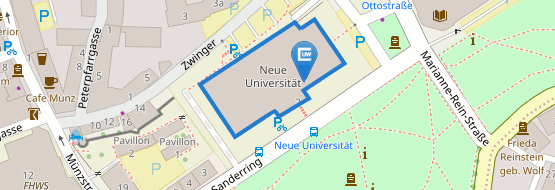Business Strategy for Information and Network Industries
Description and Objectives
The information technology revolution has changed the way we live our lives. For every service we could access by means of a computer using an Internet connection, there is a corresponding vibrant new industry. Moreover, many new industries that did not exist twenty years ago emerged and play a big role in our lives. In this class, strategies that are used and have led to success in such industries will be discussed.
In particular, the new networked world has changed how a large number of goods and services are sold, such as books, music, movies, and television, referred to as the so-called information goods. Obviously, new online platforms also carry more traditional products. The impact of the new technologies on how the nature of these industries changed will be discussed. The class will have an in depth look not only at the pricing strategies that are used in selling information goods, but also at the underlying economic principles that define the operation of the newly emerged trading platforms such as iTunes, Amazon.com, and eBay.com.
In addition to these, there are a number of industries which make the networked life function better. Google provides an essential service by cataloging the web and making it easy for users to locate what they search for. Facebook provides a new way for people to communicate with one another. Interestingly, their services are provided for free to users while they earn their profits from advertising. The course will investigate the nature of such business models and introduce the rationale for such free offerings.
Many of these new industries are characterized by phenomena such as "network effects'' which may arise even in the absence of physical networks. Hence, they are usually referred to as "Network Industries". Network effects present new challenges for business strategies as well as public policy. These difficulties are exacerbated by demand side frictions caused by switching costs. Moreover, the new nature of representing information, a stream of bits, challenge intellectual property systems.
The class will introduce these basic concepts and then discuss at an intuitive level their implications for succeeding in these industries. The course intends to introduce the functioning of the Information and Network Industries and familiarize students with simple models, which can be used to understand and develop strategies. In the course of the semester, a number of cases from these industries will be used in class discussions to provide students with a look of how to approach practical problems in developing strategies.
Prerequisites
Students taking this class should be familiar with basic concepts in Microeconomics and Game Theory. This background is provided in the courses Strategie und Wettbewerb I as well as Mikroökonomik I and II. It would be ideal if they have also taken a class in Industrial Organization, but not a must.
Textbook and Lecture Notes
There is no textbook. The course will be based on detailed lecture notes, which are provided on the WueCampus site.
As a general reference, interested students can use the following excellent book:
Carl Shapiro and Hal R. Varian, (1998), Information Rules: A Strategic Guide to the Network Economy, Harvard Business School Press.
In addition, a freely available book on Industrial Organization can serve as a reference for the tools that we will employ in this class:
Jeffrey Church and Roger Ware. (2000), Industrial organization : a strategic approach. Boston: Irwin/McGraw-Hill.
It can be downloaded at http://works.bepress.com/jeffrey_church/23/


